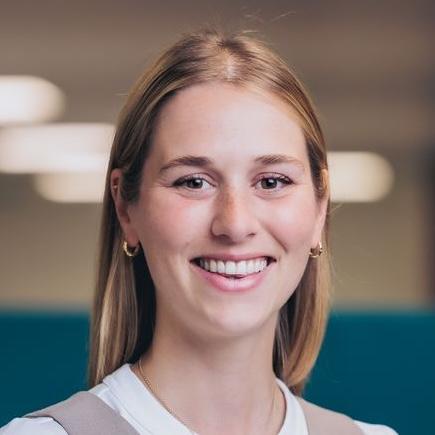Putting money aside for your kids is a task that's always on parents' to-do lists but often gets overlooked amid daily life. Setting up investment accounts and starting to allocate money for your children doesn't take much time and can result in a significant savings pot by the time they turn 18.
Many parents who start saving for their kids default to cash – 42% of the money put into Junior ISAs went into cash, government figures show*. However, investing is more likely to generate higher returns over the long term than cash. Over the past 10 years, £1,000 invested in a global tracker fund would have grown to £3,268, while the same amount in the average cash ISA would have returned just £1,096**.
Here are some quick ways to start investing to set your child up for later life.
Step 1: Pick the right account
When starting out, it might be confusing to pick the right account. A Junior ISA is a good option for many parents: you can pay in up to £9,000 a year, the money is ring-fenced in the child’s name, and it’s locked up until they turn 18.
If you want more flexibility or think you might need access to the money before your child’s 18th birthday, you could save the money in your own ISA. This means using some of your own £20,000 annual limit on what you can pay into your ISA, but that’s only an issue if you think you’ll max out that allowance. The money isn’t ring-fenced for your child in the same way as a Junior ISA, so you can access it anytime – which can be both a pro and a con. If you’re worried you might dip into the money, a Junior ISA might be better, but if you want flexibility, your own ISA could be a good option.
Another long-term option is a pension for your child: a Junior SIPP. You can save up to £2,880 in this account, which will be topped up with tax relief from the government to £3,600. However, your child can’t access the money until retirement age. A one-time contribution of £2,880 at birth, growing at 5% a year, could be worth £46,500 by age 57 – showing the magic of investment growth and compounding***.
Step 2: Automate everything
Automation is a parent’s best friend – like setting up direct debits to pay your bills or subscribing to essentials, it means you don’t have to remember to invest each month.
You can set up automatic investments on most platforms by arranging a direct debit from your bank account into your investment account, then setting up a regular investment into your chosen investments. Many platforms allow you to start regular investing from as little as £25 a month. You can pause it if needed, but this way, you don’t have to log in and invest money each month.
As a bonus, regular investing can protect against investing at a time when markets are high, spreading your investments across the year to smooth things out.
Step 3: Track down lost accounts
If you started saving for your child years ago but lost track of the account, it’s likely not earning much (if any) interest if it’s in cash. Track down the paperwork and consider transferring it into one place for easier management.
Parents of older children may have a Child Trust Fund they’ve lost track of. These accounts had government contributions but are often forgotten. The government has a tracing service to find out if you have an account and who it’s with. Once located, you could transfer it to a Junior ISA, which usually has broader investment choices and lower charges. If transferring the Child Trust Fund, you must move the entire sum to a Junior ISA as you can’t have both account types open simultaneously.
Step 4: Work out what you can afford
A Junior ISA has a generous £9,000 annual limit. Parents who can afford to put this away each year can quickly build a substantial pot for their child. Someone saving the full £9,000 each year from birth, with 5% annual returns, would hand their child £266,000 on their 18th birthday.
But those figures aren’t realistic for most parents – the average investment ISA subscription is £1,800 a year****. Instead, determine what you can afford each month or year and build up from there. Early years might be tight, but once nursery and nappy costs are gone, you could increase contributions.
Even saving £25 a month from birth means a pot worth almost £9,000 by their 18th birthday, assuming 5% annual growth. Increasing to £50 a month from their fifth birthday means a £15,000 pot by age 18. Starting later, saving £100 a month from their 10th birthday results in a £12,000 pot by age 18.
Step 5: Get grandparents, friends, and family involved
While a parent or guardian needs to open a Junior ISA, others can contribute. Grandparents and family can top-up the pot to boost your child’s investments. They can make one-off payments or set up regular monthly investments. Ensure collective contributions don’t exceed £9,000 per child per tax year.
Step 6: Select your investments
When picking investments, decide if you want to pick stocks yourself or outsource to a fund. For funds, choose between an active manager or a passive fund. Passive investments cost less but only track market performance. Active management costs more but aims for higher returns. You don’t need to stick to one approach. You could mix passive investments with an active fund for specific areas. Another option is an all-in-one fund, active or passive, that invests in various assets, providing diversification in one fund. If this feels a bit overwhelming, you can find out more from our article: what are the main types of investments?
When investing for your children, consider the timeframe. Younger children have up to 18 years until they access the money, allowing more risk to ride out market fluctuations. For older children closer to 18, you might want to take less risk or even stick to cash. Ultimately, the choice depends on your risk preference and attitude.
*According to HMRC ISA figures
**Investment figures based on Fidelity Index World and don’t include platform charges. Cash figures based on Bank of England average cash ISA rates.
***All investment figures based on 5% growth a year.
****According to HMRC ISA figures
We don’t offer advice, so it’s important you understand the risks, if you’re unsure please consult a suitably qualified financial adviser. The value of your investments can go down as well as up and you may get back less than you originally invested.
These articles are for information purposes only and are not a personal recommendation.




